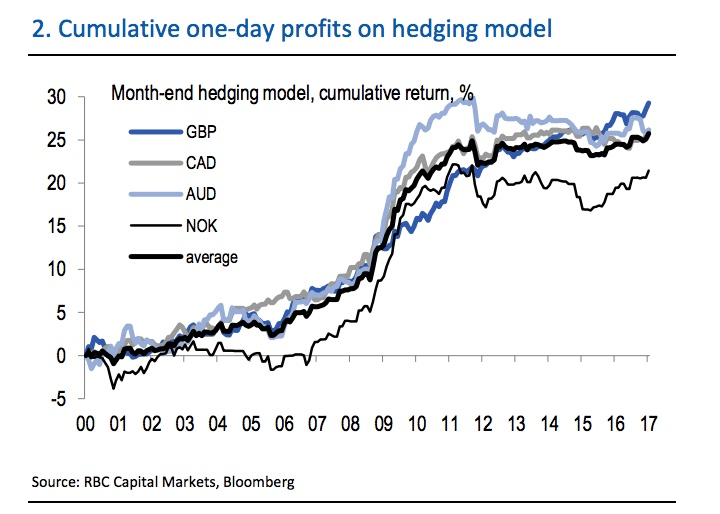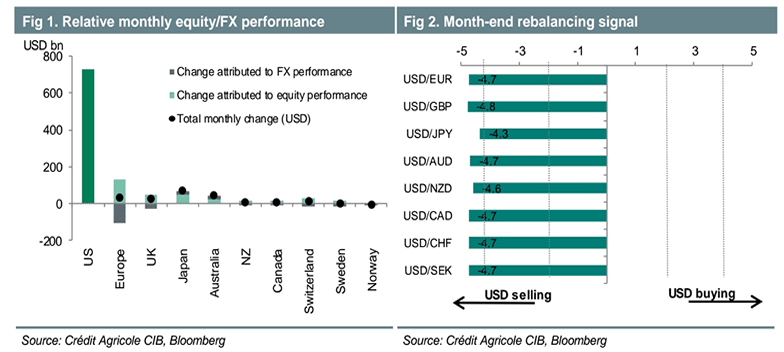Month-End Flows: US Dollar Weakness Forecast

Analysts predict the US Dollar to see selling pressure on Tuesday as foreign exchange markets are subjected to the rebalancing of global investment portfolios.
The end-of-month period is typically characterised by market-churning flows of foreign exchange as investors rebalance their portfolios that often cause an element of surprise for those watching the currency markets.
“Anecdotal evidence suggests that month-end flow in FX markets is significant and that at least part of that flow reflects equity managers adjusting hedges to account for month-to-date returns,” says Adam Cole at RBC Capital Markets in London.
Research by RBC Capital shows there to be a clear tendency for USD/CAD and GBP/USD to rise on the last day of months where equity returns are positive and vice versa, particularly so when the change in equity prices is large.
The rationale for this is that rising prices raise the value of foreign investors’ US equity holdings, leaving a requirement to sell USD forward for the proportion of portfolios that is hedged.
“US equities are up 3.9% MTD, sufficient to trigger USD selling signals against GBP, AUD, CAD, and NOK from our month-end hedging model,” says Cole adding this is, “sufficient to trigger comprehensive USD selling signals from our month-end model.”
It is noted that the month-end flow model is quite consistent for both the GBP and CAD.
“We get the most consistently profitable trading results for GBP/USD, which is perhaps not surprising given the large stock of pension assets in particular in the UK, and likely biases toward both equity investing and US holdings,” says Cole.
Note, however, that analysts can find no evidence that this relationship holds in reverse as there is no systematic link between relative equity price movements and month-end FX returns.
“It seems that either equity managers in the US leave their foreign holdings largely unhedged or foreign holdings simply aren’t big enough to matter, unlike overseas managers whose portfolios are likely to be highly weighted in US stocks,” says Cole.
So, the effect of month-end hedging is restricted to USD and unidirectional, and only US equity returns matter.
"Strong US Dollar Selling"
Global market risk sentiment has remained firm this month and equity markets
have traded higher across the board.
This performance leads Credit Agricole's FX Strategist Jennifer Hau to predict strong US Dollar selling.
"US equity outperformance, when adjusted for market capitalisation and FX moves, suggests month-end portfolio rebalancing flows are likely to be strong USD selling across the board," says Hau in a note to clients dated February 27.
Credit Agricole's model is based on the concept that global portfolio managers have set benchmarks for currency hedge ratios and, as the value of their assets within their portfolio changes over the course of the month, portfolio managers will need to re-hedge their currency exposure, so that their currency benchmarks are maintained.
Typically, these FX rebalancing flows are seen at the end of the month and usually their impact is felt most near the 4pm London fix on the last trading day of the month.
"We look at the change in equity performance by market capitalisation for all G10 currencies, and we adjust this for monthly FX spot moves. This provides an indication of how the value of assets has changed over the course of the month and thus the extent of portfolio rebalancing flows that will likely take place at the end of the month," says Hau.






